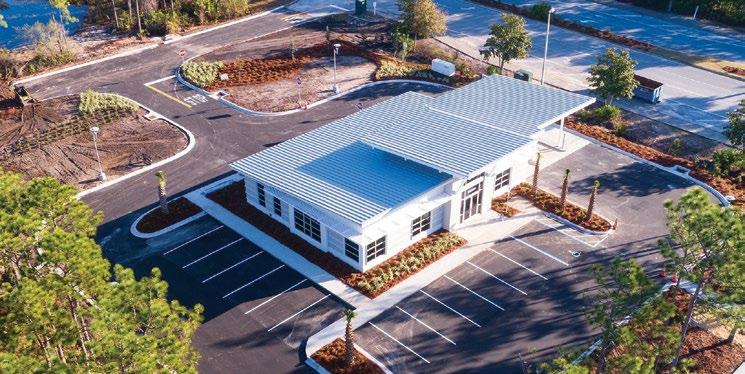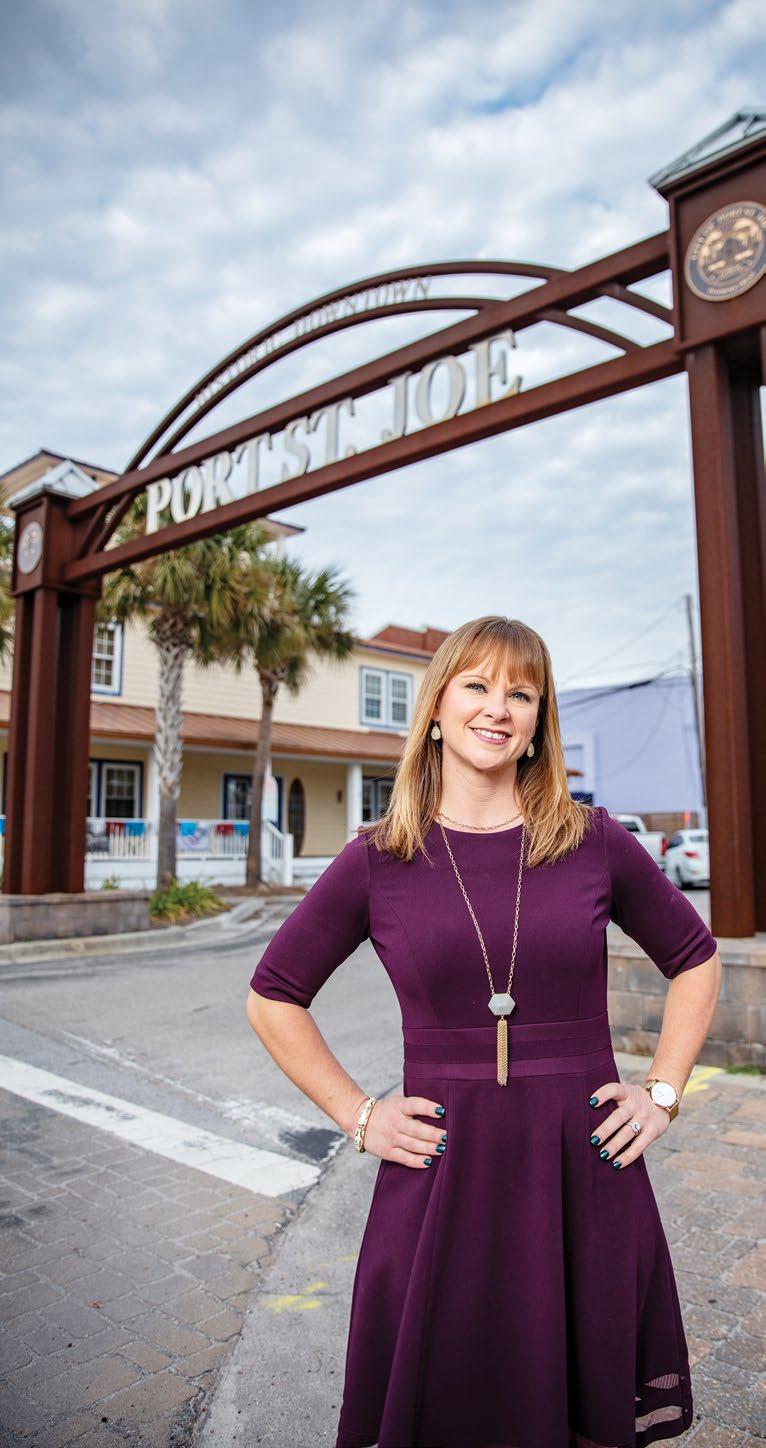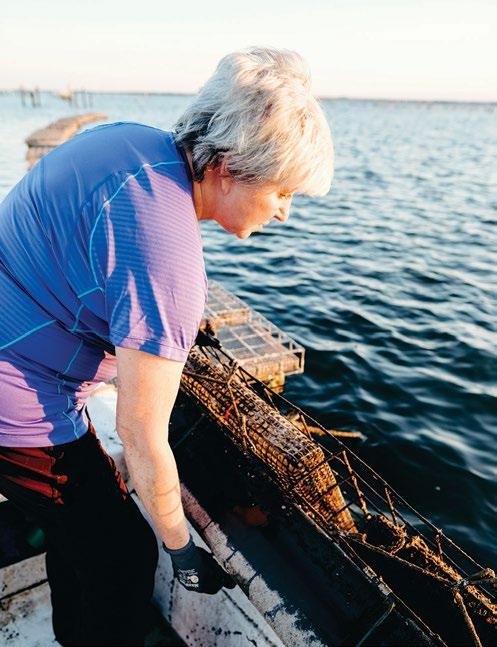
4 minute read
Aquaculturists are a resilient lot, as they must be
OVERCOMING OBSTACLES
Oyster growers pivot in response to pandemic
BY LAZ ALEMAN
Farming is a risky enterprise, and aquaculture — a form of farming — no less so.
Besides the common culprits of weather, markets, diseases and government regulations, oyster growers were dealt two extraordinary blows in recent times. First came 20ı8’s Hurricane Michael, and just when the industry was recovering, the 2020 pandemic hit.
Aquaculturists, however, are a resilient lot as they must be, if they are to cope with the capriciousness of nature and the marketplace. The oyster companies that are pulling through the pandemic — however battered — are those that adapted quickly to the
“The innovative ones found a way around the coronavirus,” said Bob Ballard, director of the
Wakulla Environmental Institute (WEI), which teaches aquaculture. “Those who sat around hoping things would return to normal without being proactive are probably not in business.”
Among the survivors are OysterMom, Saucey
Lady Oysters, Nature Coast Oyster, Outlaw Oyster and Oyster Boss. OysterMom and Nature Coast are small, mostly retail operations that farm single leases, whereas Saucey Lady, Outlaw Oyster and Oyster Boss are larger growers that farm multiple leases, process their own and others’ oysters, and largely wholesale their products. Outlaw Oyster additionally sells aquaculture supplies.
When the pandemic closed bars and restaurants, these companies pivoted rapidly and turned to or intensified retail and direct-to-consumer sales.
“I accelerated retail marketing,” said OysterMom’s
Deborah Keller, whose business is solidly grounded in retail. Customers order from Keller via phone or text and pick up their oysters during designated hours. She also sells oysters online and at several
Tallahassee open markets, as well as operating a catering service.
“I survived because I was established in retail,”
Keller said. “The other reason is I’ve stayed small.”
Jennifer and John Fountain own Nature Coast Oyster. A self-described “newbie” who has been in business since 20ı8, Jennifer sells her oysters to a Panacea processor, who in turn sells them regionally and across the Southeast. Besides the pandemiccaused drop in sales, the Fountains’ oysters suffered high mortalities.
Partners Tim Jordan and Walt Dickson run Saucey
PHOTOS BY ERICH MARTIN
Aquaculturist Deborah Keller of OysterMom inspects the crop at her lease. Farmed oysters are uniform in shape and size and are free of clinging organisms such as barnacles.
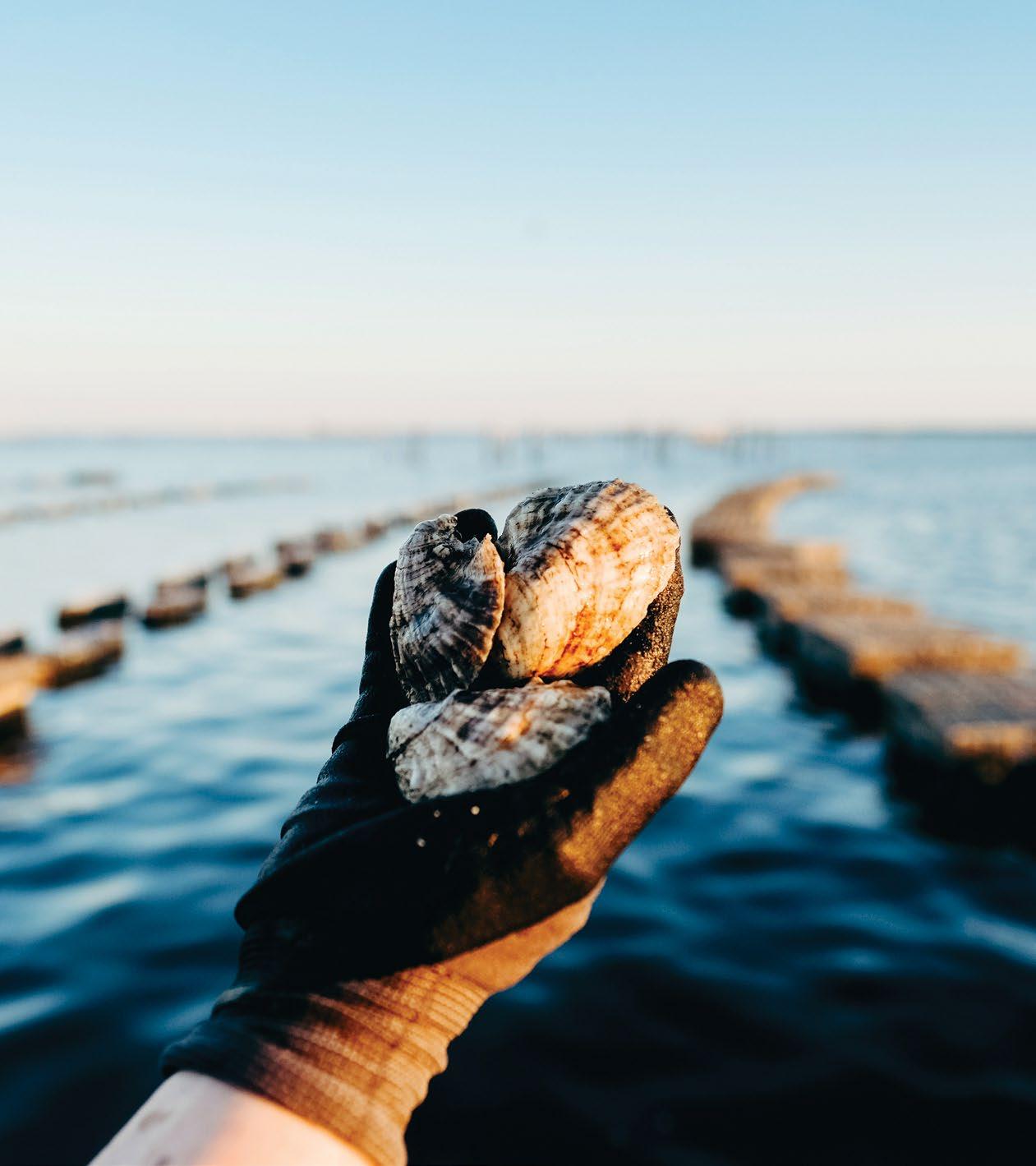
Keller tends to the cages used for oyster growing. Oyster sellers, given the pandemic’s impact on bars and restaurants, have resorted to a greater emphasis on retail sales.
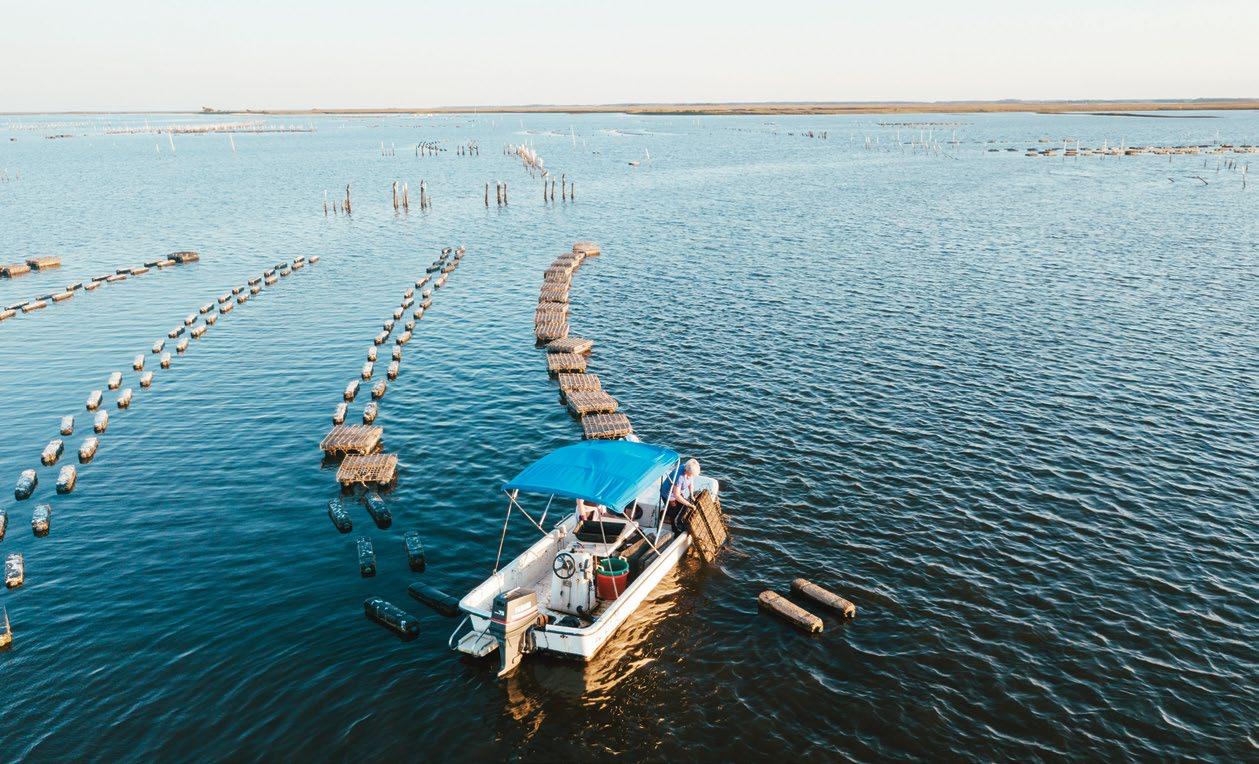
Lady Oysters in Panacea. Jordan described their clientele as mostly upper-end bars and restaurants in the Southeast. He estimated that his business has fallen off 50 to 75 percent since the pandemic arrived.
Danita Sassor and Blake Garner own Outlaw Oyster, another Panacea-based operation.
“We’re not doing great, but we’re doing good enough, considering the circumstances,” Sassor said. When the lockdown dried up their regional and out-of-state wholesaling, Sassor said they switched to retailing via social media.
“Customers came out of the woodwork,” she said. “Our retail sales went through the roof when our wholesale sales dropped to nothing.” Since then, wholesaling has somewhat rebounded, but nothing like before.
Jeff Tilley and son Reid own Oyster Boss, a Sopchoppy-based operation whose customers span the Southeast and include New Orleans. The week the restaurants and bars closed, Tilley had 30,000 oysters ready for delivery. Faced with a potential disaster, he switched to retail, cut prices and began advertising on social media.
“The long and short of it is that we sold all 30,000, and by the following week, we were back in production,” he said. Sales have since normalized. “I’ve maintained a healthy balance sheet by finding creative ways to bring our products to buyers,” Tilley added. He’s also diversified into selling crawfish and wild-caught shrimp and oysters.
“I want to be the Walmart of Sopchoppy,” he said, laughing.
Portia Sapp heads the aquaculture division at the Florida Department of Agriculture, which oversees the industry. She notes that shellfish farmers face additional marketing hurdles because of stringent state requirements to ensure consumers’ safety. “There are many extra safety protections in place for shellfish that don’t apply to other commodities,” she said.
Notwithstanding the obstacles and setbacks, Sapp said the industry is thriving. “It’s rapidly growing,” she said. “Every year, there’s more interest and new areas developed.”
Saucey Lady’s Jordon offers one reason why.
Oyster farmers relish the independence and entrepreneurial challenge. The work, they also say, keeps them fit and healthy, and the sunrises and sunsets on the water can’t be beat.

